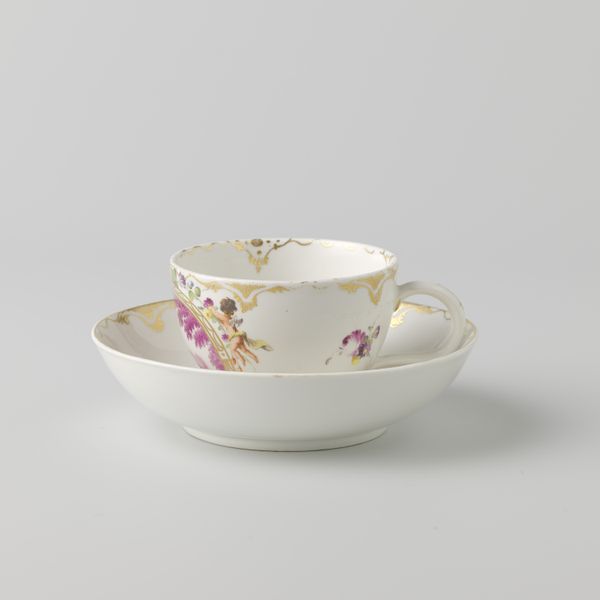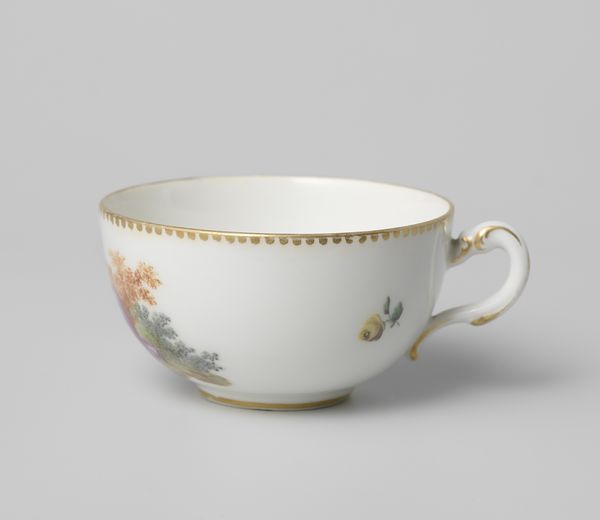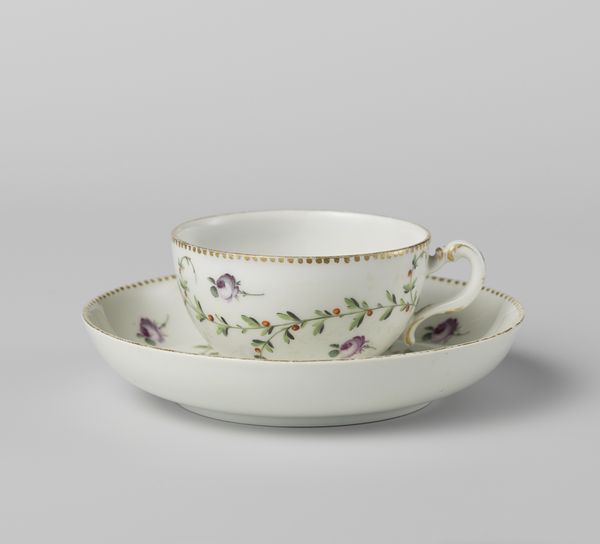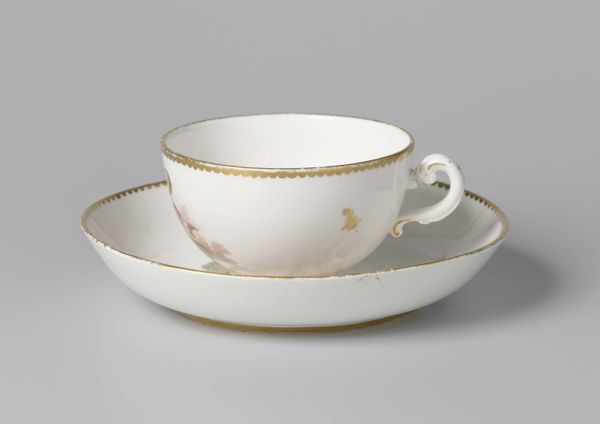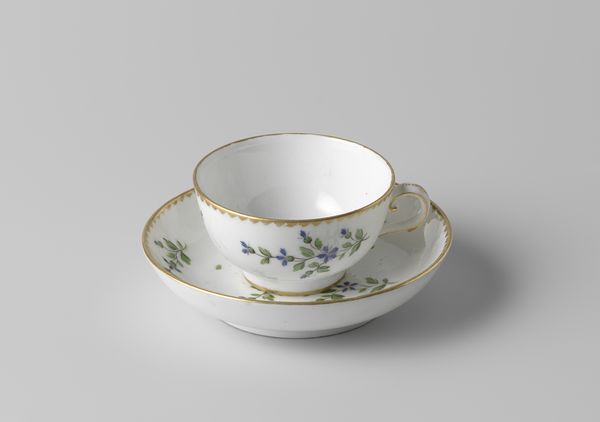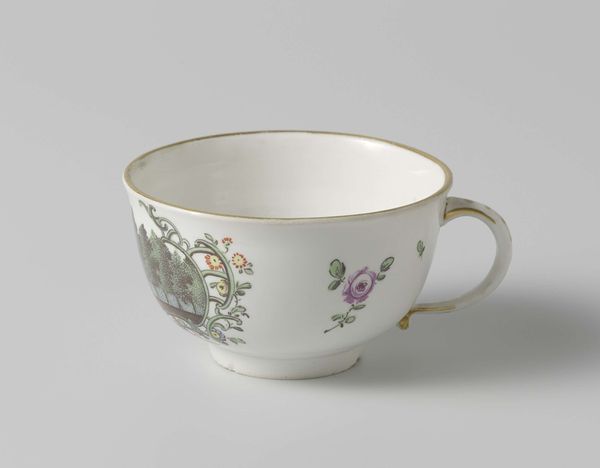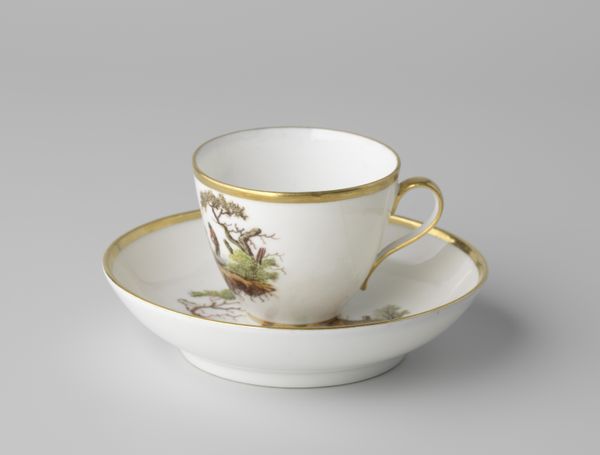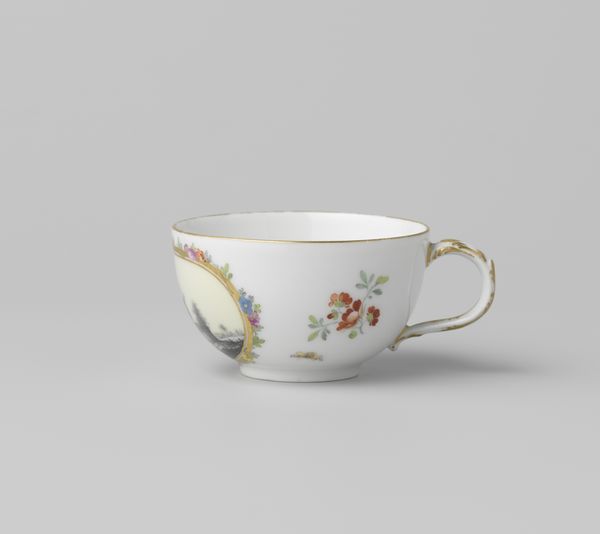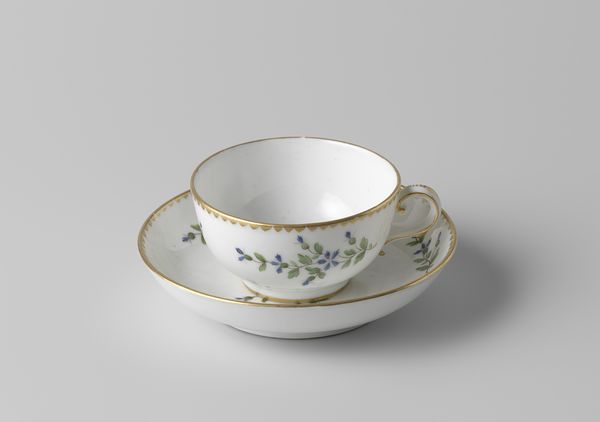
Dimensions: height 5 cm, width 10.2 cm, diameter 8 cm
Copyright: Rijks Museum: Open Domain
Editor: Here we have a porcelain cup, or "kop" as it's titled, made sometime between 1777 and 1790 by the Porseleinfabriek Den Haag. It feels quite delicate and decorative with its Rococo flourishes. What strikes you when you look at this object? Curator: Well, I immediately think about the rise of porcelain and its connection to social status in the late 18th century. Tea and coffee drinking became fashionable amongst the elite. Owning decorative pieces like this signified wealth and good taste, and displays of these pieces were important social gestures. Editor: So this wasn't just for everyday use? Curator: Likely not for everyone. The intricate design, the delicate nature of the porcelain, all point towards a display piece, something to be admired. Note the gilded edges and small pastoral scene. How do you see that image relating to the work overall? Editor: It feels quite idyllic and perhaps speaks to the leisurely lifestyle of the cup’s intended owner. A manufactured piece made to imply simpler, possibly pastoral pleasures. Curator: Precisely. The Rococo style is characterized by asymmetry and delicate balance; how do you feel those manifest on this cup? Also note the tension between art and craft and the institutional power involved in establishing the Hague factory during a very competitive European art market. Editor: It is present, indeed; this helps reveal what historical narratives objects like these silently tell us. Curator: Indeed. Examining such objects lets us analyze both the social functions of art, and power structures influencing what stories get told. Editor: I've certainly learned to think about this piece beyond its visual appeal. There is indeed more that meet the eye here!
Comments
No comments
Be the first to comment and join the conversation on the ultimate creative platform.
